SIM card sizes explained: Standard, micro, nano, & eSIM
Standard, micro, nano, and eSIM are the most common SIM card sizes. Check out this guide to learn the key differences between them.
If you’ve been using phones for more than a few years, you’ve probably noticed the changing sizes of SIM (Subscriber Identity Module) cards. But is there any meaning to the size of a SIM card, or have manufacturers been simply cutting down on the plastic around the chip?
Follow along to learn all about SIM card sizes and how they’ve evolved over the years.
Ditch physical SIM cards
Enjoy unlimited data with Holafly eSIM. Use code MYESIMNOW5 for 5% off your order.
What is a standard SIM card?
Ever owned a phone with physical buttons instead of a screen taking up the entire surface area? If so, a standard SIM card is probably what you imagine whenever you think of a physical SIM card.
Standard SIM cards succeeded 1FF cards, which were the size of a credit card and were used in the first production mobile devices. For a short while, a standard SIM card was known as a mini SIM card instead because of how much smaller it is than the 1FF card.
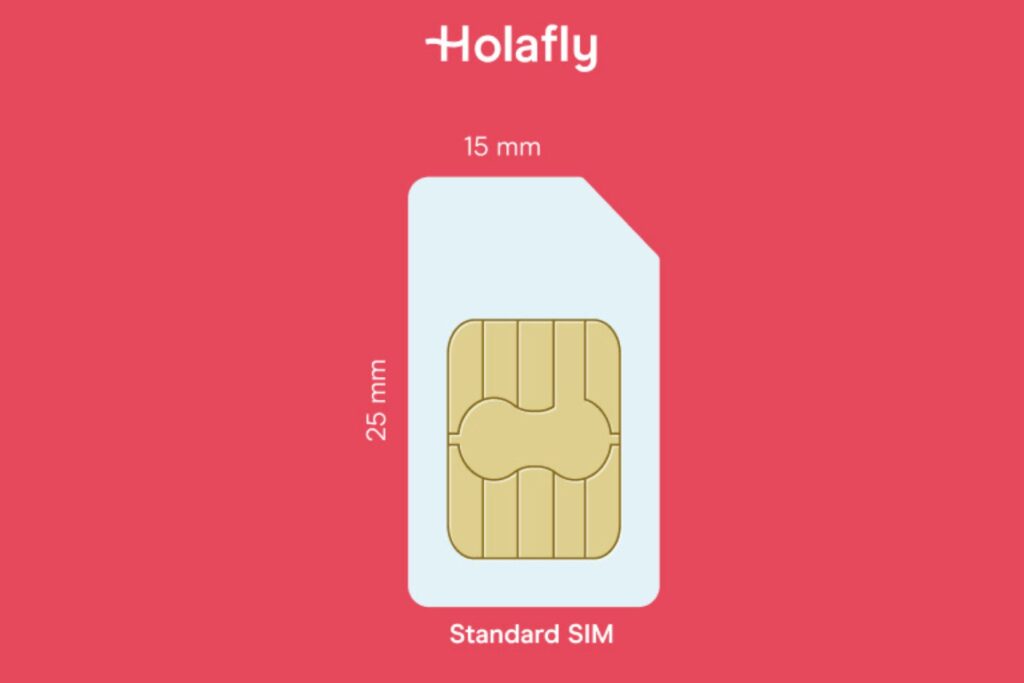
What is a micro SIM card?
Micro SIM cards are essentially just smaller versions of the standard SIM card, featuring the exact same chip but a smaller surface area. They measure 12 by 15mm (0.47 by 0.59”) and were first introduced back in 2003.
The size of the card was reduced to increase the internal area of phones, which can be used to fit larger batteries or more powerful processors. Micro SIM cards are also sometimes referred to as 3FF cards and were last used for flagship mobile phones such as the Samsung Galaxy S5 or iPhone 4s.
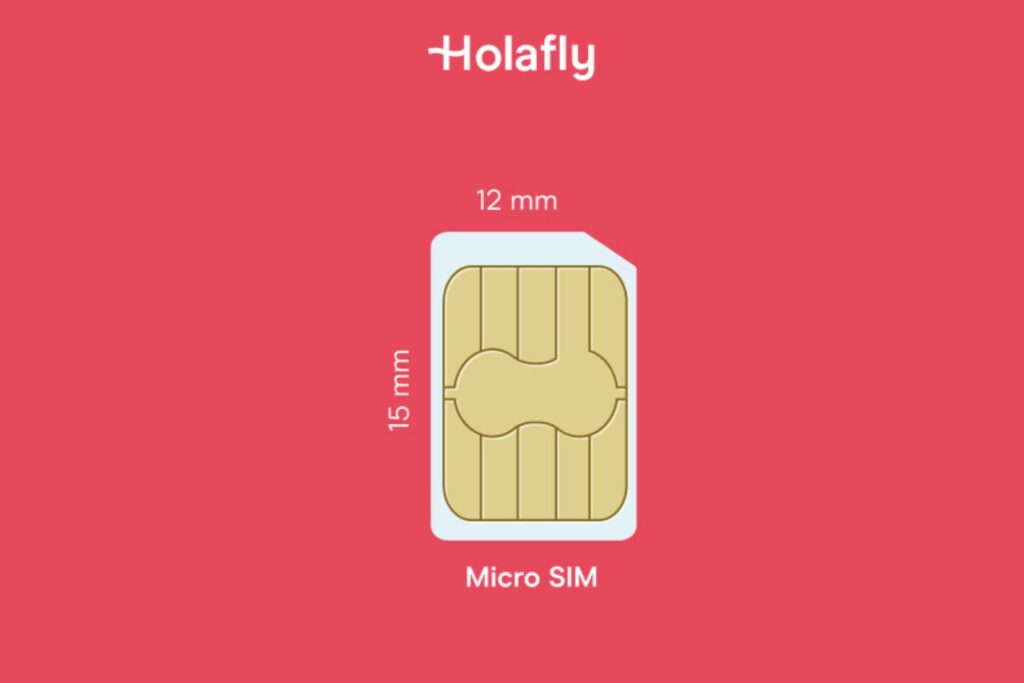
What is a nano SIM card?
Once the extra internal space from micro SIM cards was no longer enough, phone developers made SIM cards even smaller. Nano SIM cards are 8.8 by 12.3mm (0.35 by 0.48”) in size and are essentially just the size of the chip, with barely any plastic supporting it.
They were first introduced in 2012, and while micro SIMs took a while to catch on and replace standard SIM cards, nano SIMs replaced macro SIM cards almost immediately. The iPhone 5 was released in the same year as the introduction of nano SIM cards, and it already featured a nano-SIM tray.
Nano SIM cards are also referred to as 4FF cards and are still used in modern phones that have a tray for physical cards.
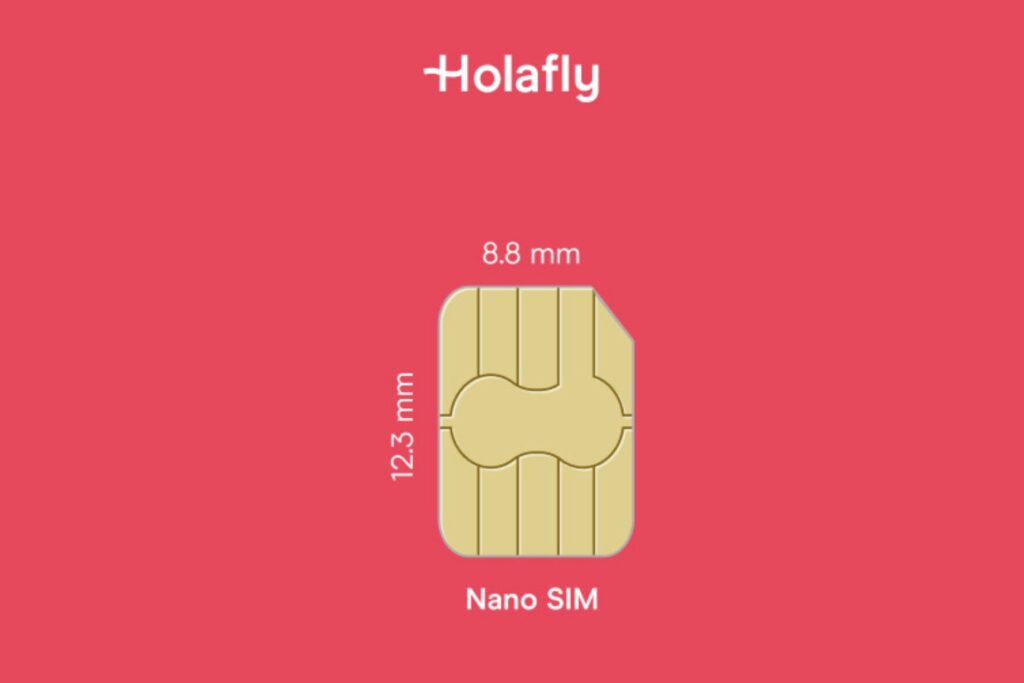
What is an eSIM card?
What’s better than using a really small SIM card? Using no physical SIM cards at all. eSIMs, or embedded SIM cards, were first introduced as a way to get all the benefits of a regular SIM card, just without the physical card itself.
Many modern phones support both nano-SIM and eSIM cards, but some phones, most notably the latest iPhone models, don’t even have a SIM card tray and only support the use of eSIMs.
This technology still requires the phones to have a small physical chip, 6 by 5mm (0.24 by 0.2”) in size, but it’s almost two times smaller than a nano SIM card. Only phones that have this chip are compatible with eSIM technology.
On top of leaving more internal space for other tech inside the phone, eSIMs also let you switch your mobile network provider instantly without having to physically replace SIM cards.
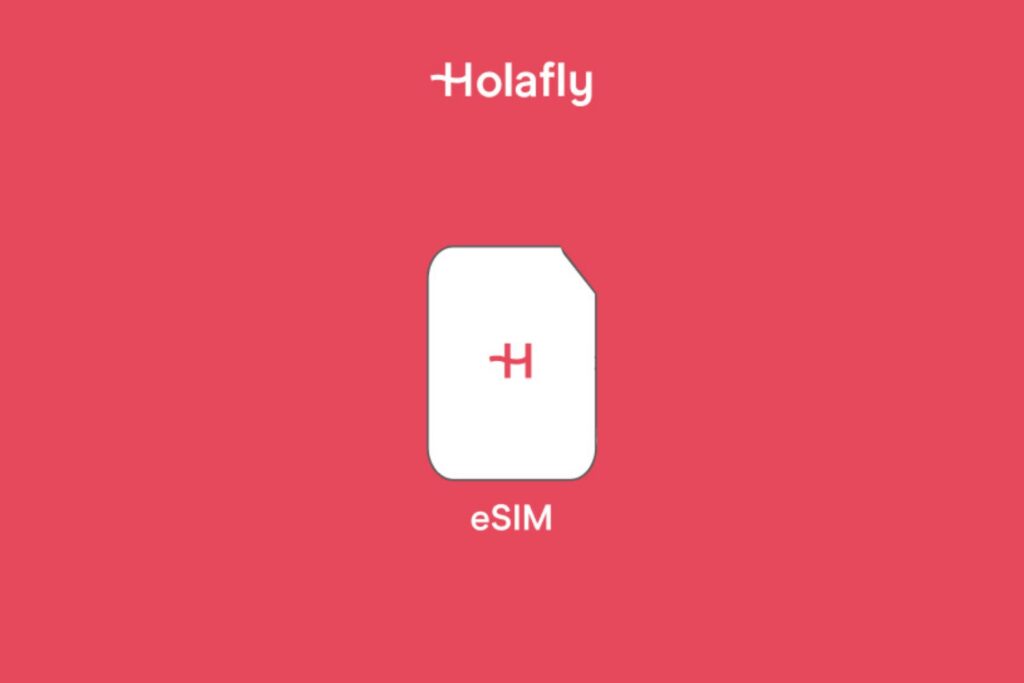
What size SIM do I need?
You probably need a nano SIM card for your phone unless you’re using one of the older cell phone models made before 2014. Apple iPhone 14 or older models bought in the US don’t have a physical SIM slot at all and only work with eSIMs. There are still exceptions with some devices using micro or standard SIMs today, but these are few and far between.
Thankfully, there’s no need to worry as most mobile network operators either allow you to choose the SIM card size or provide a card with cutouts that can be used in either of the common SIM card sizes.
| SIM card type | SIM card size |
| Standard | 15 by 25mm (0.59 by 0.99”) |
| Micro | 12 by 15mm (0.47 by 0.59”) |
| Nano | 8.8 by 12.3mm (0.35 by 0.48”) |
| eSIM | No physical card needed |
Avoid SIM card size confusion with a Holafly eSIM
It’s pretty hard to choose the wrong SIM card size when there are no sizes to choose from. You can transfer an eSIM from one phone to another without having to worry about whether or not it’ll fit.
eSIM technology is a one size fits all solution to SIM cards, which is why it’s already on route to replacing physical SIM cards.
eSIMs are a particularly useful alternative to travel SIM cards, allowing you to stay connected without having to replace cards every time you visit a new country. Simply buy an eSIM plan that suits your needs and never worry about staying connected again.
FAQs
SIM cards are getting smaller to reduce the amount of internal space they take up on your phone. This extra space is used to fit bigger batteries or more powerful processes without making the device itself bigger.
No, some modern phones no longer support physical SIM cards and only work with eSIMs.
If your SIM card doesn’t fit, you should contact your mobile operator and ask for a new card in the correct size. If you’re in a situation where you must use your SIM immediately, cards that are too large can be cut down to size, since they all use the same type of a chip, only with a different amount of plastic around it.
Plans that may interest you
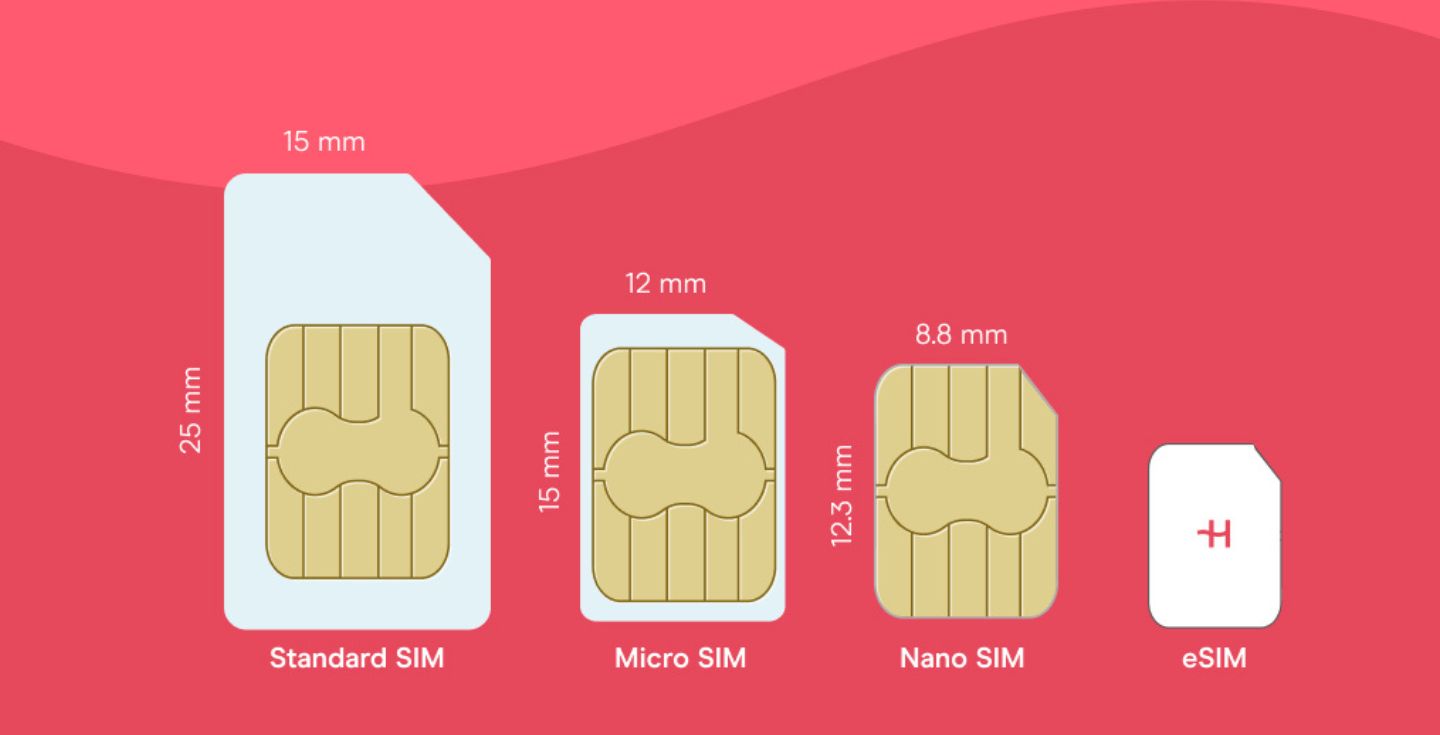






































 Pay
Pay  Language
Language  Currency
Currency 


















 No results found
No results found





